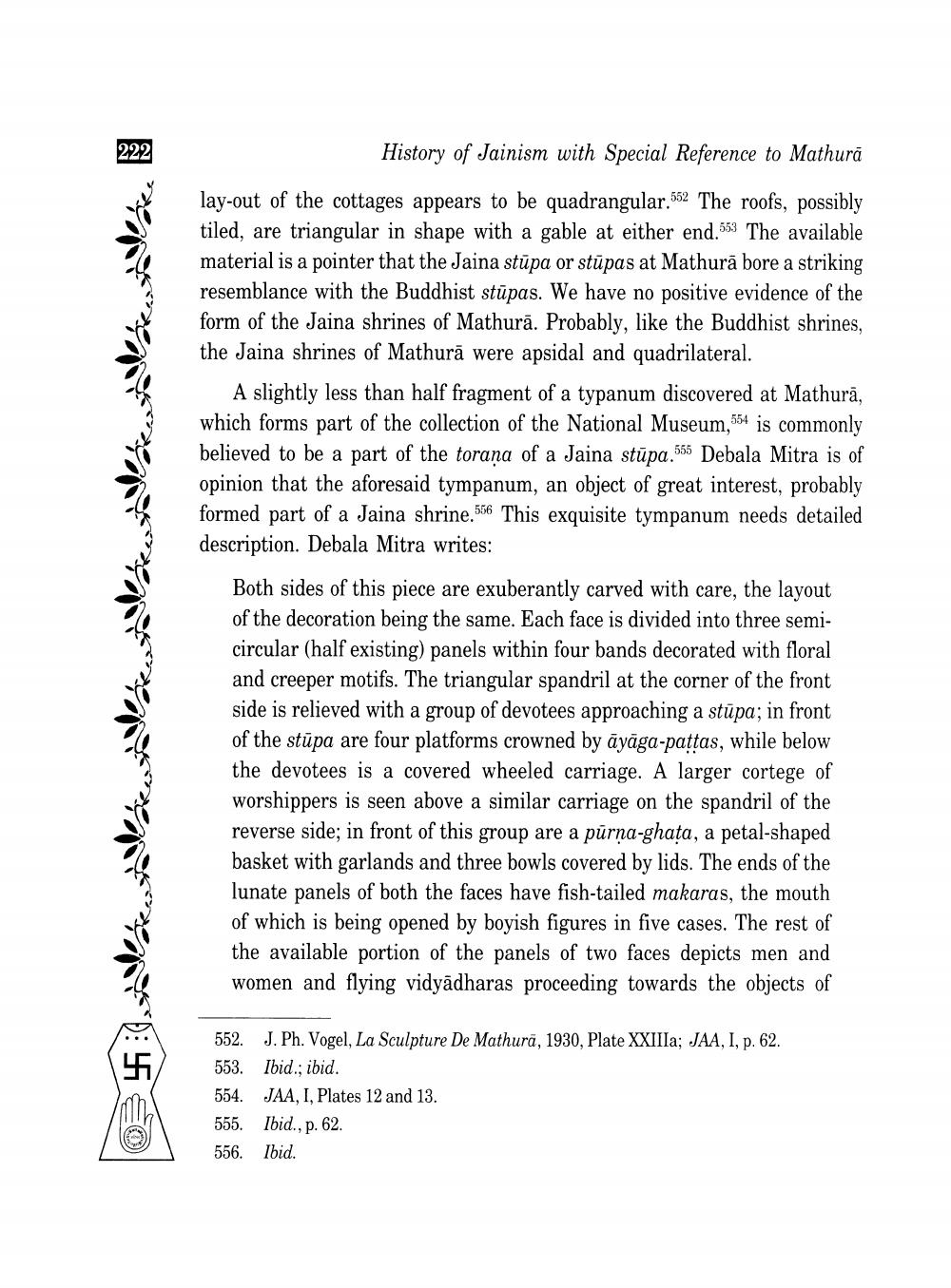________________
History of Jainism with Special Reference to Mathurā
lay-out of the cottages appears to be quadrangular.562 The roofs, possibly tiled, are triangular in shape with a gable at either end.553 The available material is a pointer that the Jaina stūpa or stūpas at Mathurā bore a striking resemblance with the Buddhist stūpas. We have no positive evidence of the form of the Jaina shrines of Mathurā. Probably, like the Buddhist shrines, the Jaina shrines of Mathurā were apsidal and quadrilateral.
A slightly less than half fragment of a typanum discovered at Mathurā, which forms part of the collection of the National Museum,554 is commonly believed to be a part of the torana of a Jaina stūpa.555 Debala Mitra is of opinion that the aforesaid tympanum, an object of great interest, probably formed part of a Jaina shrine. 556 This exquisite tympanum needs detailed description. Debala Mitra writes:
Both sides of this piece are exuberantly carved with care, the layout of the decoration being the same. Each face is divided into three semicircular (half existing) panels within four bands decorated with floral and creeper motifs. The triangular spandril at the corner of the front side is relieved with a group of devotees approaching a stūpa; in front of the stūpa are four platforms crowned by āyāga-pattas, while below the devotees is a covered wheeled carriage. A larger cortege of worshippers is seen above a similar carriage on the spandril of the reverse side; in front of this group are a pūrņa-ghata, a petal-shaped basket with garlands and three bowls covered by lids. The ends of the lunate panels of both the faces have fish-tailed makaras, the mouth of which is being opened by boyish figures in five cases. The rest of the available portion of the panels of two faces depicts men and women and flying vidyadharas proceeding towards the objects of
552. J. Ph. Vogel, La Sculpture De Mathurā, 1930, Plate XXIIIa; JAA, I, p. 62. 553. Ibid., ibid. 554. JAA, I, Plates 12 and 13. 555. Ibid., p. 62. 556. Ibid.




